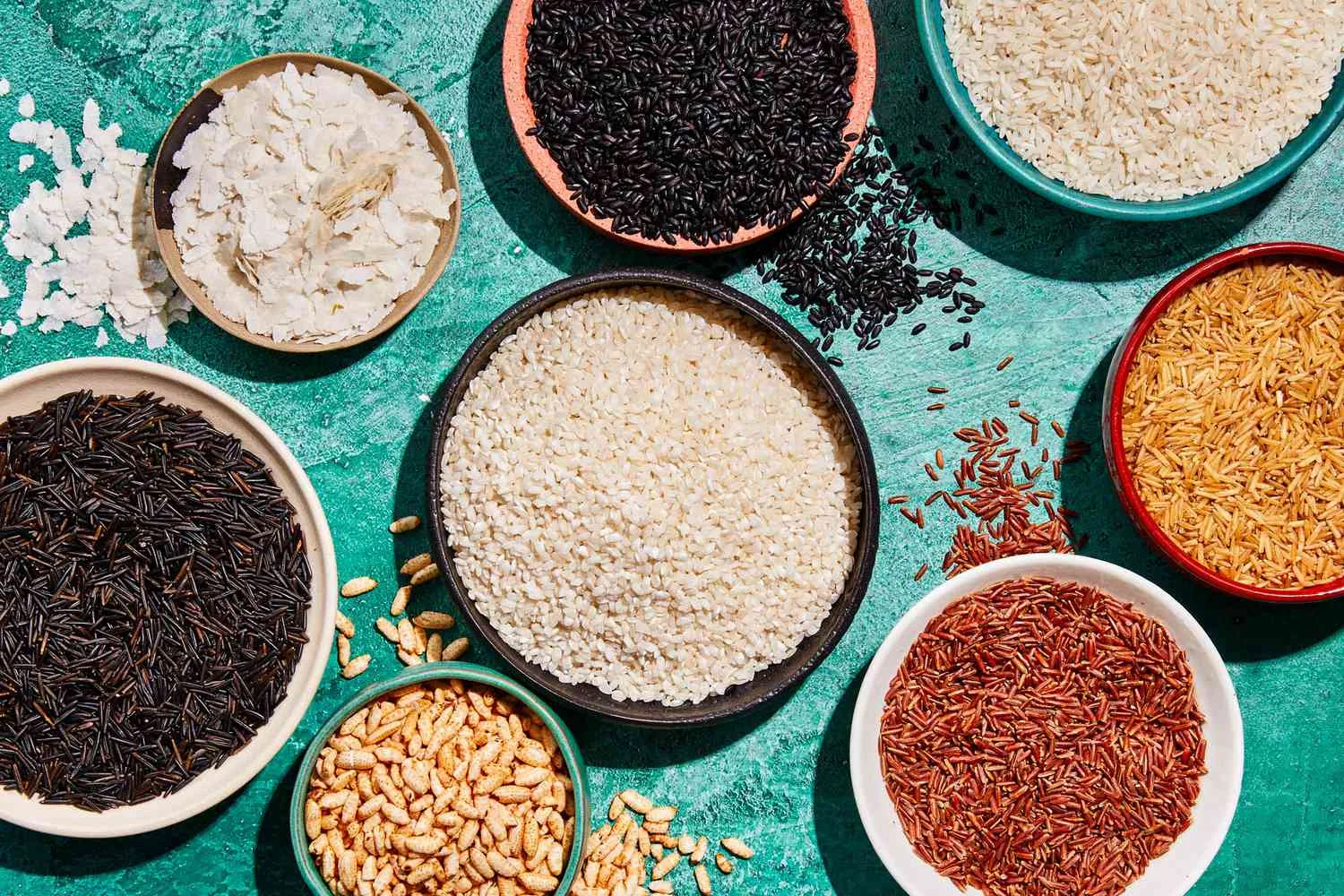Rice is a staple food for millions of people around the world, with a rich history and a wide variety of types and uses. Each type of rice has its own unique characteristics, cooking methods, and nutritional benefits. In this comprehensive guide, we will explore the different types of rice, their distinct features, and how you can incorporate them into your meals.
1. White Rice: The Popular Choice
White rice is one of the most commonly consumed types of rice globally. It is milled to remove the husk, bran, and germ, resulting in a polished, white grain.
- Characteristics: White rice has a mild flavor and a soft, fluffy texture when cooked. It comes in various grain lengths, including long, medium, and short.
- Culinary Uses: White rice is versatile and can be used in a variety of dishes, including stir-fries, pilafs, and sushi. It is also a common side dish.
- Nutritional Benefits: Although it lacks the bran and germ, white rice provides energy through carbohydrates and contains some essential vitamins and minerals.
2. Brown Rice: The Nutrient-Dense Option
Brown rice is a whole grain rice with the bran and germ intact, making it more nutritious than white rice.
- Characteristics: Brown rice has a nutty flavor and a chewy texture. It takes longer to cook than white rice and requires more water.
- Culinary Uses: It is ideal for salads, grain bowls, and as a side dish. Brown rice can also be used in casseroles and soups.
- Nutritional Benefits: Brown rice is rich in fiber, vitamins, and minerals, including magnesium, phosphorus, and B vitamins. It has a lower glycemic index than white rice.
3. Basmati Rice: The Fragrant Delight
Basmati rice is a long-grain rice known for its aromatic fragrance and delicate flavor. It is primarily grown in the Indian subcontinent.
- Characteristics: Basmati rice has long, slender grains that remain separate and fluffy when cooked. It has a distinct, nutty aroma.
- Culinary Uses: It is perfect for Indian and Middle Eastern dishes like biryanis, pilafs, and as an accompaniment to curries.
- Nutritional Benefits: Basmati rice has a low to medium glycemic index and provides a good source of energy and essential nutrients.
4. Jasmine Rice: The Aromatic Staple
Jasmine rice is a fragrant long-grain rice native to Thailand. It is known for its floral aroma and slightly sticky texture.
- Characteristics: Jasmine rice has long grains that are slightly sticky when cooked. It has a subtle, sweet flavor and a floral fragrance.
- Culinary Uses: It is commonly used in Southeast Asian cuisine, particularly in Thai dishes. Jasmine rice pairs well with stir-fries, grilled meats, and curries.
- Nutritional Benefits: Jasmine rice provides carbohydrates for energy and contains small amounts of protein and fiber.
5. Arborio Rice: The Creamy Classic
Arborio rice is a short-grain rice primarily used in Italian cuisine. It is known for its high starch content, which gives dishes a creamy texture.
- Characteristics: Arborio rice has short, plump grains with a high starch content. It becomes creamy when cooked, making it ideal for risotto.
- Culinary Uses: Arborio rice is the preferred choice for making risotto. It can also be used in rice puddings and other creamy dishes.
- Nutritional Benefits: Arborio rice provides carbohydrates for energy and some protein. It is also a good source of vitamins and minerals.
6. Wild Rice: The Nutty Grain
Wild rice is not actually rice but the seed of a grass native to North America. It has a distinct, nutty flavor and chewy texture.
- Characteristics: Wild rice has long, slender grains that are dark brown to black in color. It has a firm, chewy texture and a robust, nutty flavor.
- Culinary Uses: It is often used in salads, stuffing, and as a side dish. Wild rice pairs well with game meats and poultry.
- Nutritional Benefits: Wild rice is high in protein, fiber, and essential nutrients like magnesium, phosphorus, and B vitamins. It is also gluten-free.
7. Sushi Rice: The Sticky Essential
Sushi rice is a short-grain rice used in Japanese cuisine, particularly for making sushi. It is known for its sticky texture.
- Characteristics: Sushi rice has short, round grains that are sticky when cooked. It has a slightly sweet flavor and is seasoned with vinegar.
- Culinary Uses: It is primarily used for making sushi and sashimi. Sushi rice can also be used in rice bowls and onigiri (rice balls).
- Nutritional Benefits: Sushi rice provides energy through carbohydrates and contains small amounts of protein and fiber.
8. Black Rice: The Forbidden Grain
Black rice, also known as forbidden rice, is a whole grain rice with a deep purple to black color. It has a rich, nutty flavor and a slightly chewy texture.
- Characteristics: Black rice has short to medium grains with a rich, nutty flavor. When cooked, it turns a deep purple color.
- Culinary Uses: It is often used in salads, desserts, and as a side dish. Black rice pairs well with seafood and vegetables.
- Nutritional Benefits: Black rice is rich in antioxidants, particularly anthocyanins, which give it its dark color. It is also high in fiber, vitamins, and minerals.
9. Red Rice: The Nutrient-Rich Option
Red rice is a whole grain rice with a reddish-brown color and a nutty flavor. It is often used in traditional dishes in Asia.
- Characteristics: Red rice has long grains with a reddish-brown color. It has a firm texture and a nutty flavor.
- Culinary Uses: It is commonly used in salads, rice bowls, and as a side dish. Red rice pairs well with meats and vegetables.
- Nutritional Benefits: Red rice is rich in fiber, antioxidants, and essential nutrients like iron and zinc. It has a low glycemic index and is gluten-free.
In Summary
Exploring the different types of rice opens up a world of culinary possibilities. Each variety has its own unique characteristics, cooking methods, and nutritional benefits. Whether you prefer the fragrant basmati, the creamy arborio, or the nutrient-dense black rice, incorporating a variety of rice into your diet can enhance your meals and provide essential nutrients for your health.









